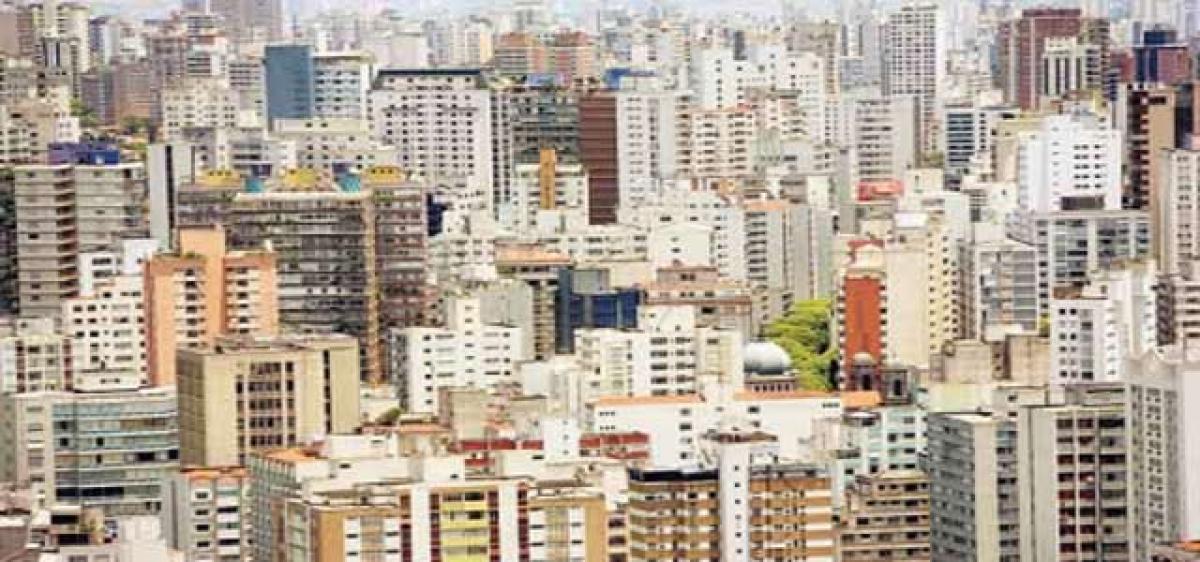Live
- A Guide to Temperature and Humidity Standards in Data Center Server Rooms
- Gadwal collector briefs on details of voters
- Jupally Krishna Rao takes part in Alampur rallu
- Bharath Prasad files 3rd Nomination
- Baisakh Month: A Time of Auspicious Beginnings and Sacred Festivals
- Oust BJD govt for overall development, says Shah
- Unveiling the Hidden Gems: Surprising Health Benefits of Garlic Peels
- Overcoming Sleep Struggles: A Comprehensive Guide to a Restful Night
- RTC bus hit the auto
- MLA Kuchukula Rajesh Reddy participated in the Birappa festival
Just In

The Hans India on 3rd December 2016 presented extracts of NITI Aayog Vice-Chairman Arvind Panagariya’s interview to a private TV channel under the headline “Lower stamp duty likely to curb black money.”
The Hans India on 3rd December 2016 presented extracts of NITI Aayog Vice-Chairman Arvind Panagariya’s interview to a private TV channel under the headline “Lower stamp duty likely to curb black money.” In fact in my letter to Prime Minister Narendra Modi, dated 14th November 2016, titled “Will demonetisation stop black money’s role in Indian economy? I presented the following facts:
Real estate transactions: With the large gap between market values and registration values, a large sum of black money changes hands. In fact, even white money turns into black in this process. At a budget discussion meeting of AP government in 2003, I proposed [I was one of the invitees] to bring down registration fee from 13.5% to 5-6% and raise the land value to market value. The Principal Secretary asked me to give in writing, which I did. This suggestion was implemented in 2005.
This resulted in rise in registration values in Banjara Hills and Jubilee Hills Zone of Hyderabad city from around Rs 5,000 to Rs 38,000. That means black money role was reduced by about Rs 33,000 per square yard
Subsidy: I noticed that around 30% of the subsidy in agriculture inputs (as well PDS kerosene, which helps adulteration of fuel and increases air pollution, and gas) turning into black. I proposed to the Prime Minister to introduce a system of direct cash payment to farmers instead of giving it to industry. Two IIM professors proposed subsidy to be given to industry as was the practice and MPs proposed to give it to retailers, but it was turned down by the government. The results are seen already.
Let me present the reduction of black money role exactly with the 2005 order of AP government per square yard. The registration fee was reduced from 13.5% to 9.5% and the land value was increased from Rs 6,000 to Rs 38,000 by stating that the fee will be gradually reduced to 5 to 6%. For Rs 6,000 at 13.5%, the fee is Rs 810; and for Rs 38,000 at 9.5%, the fee is Rs 3,610 – a net gain of Rs 2,800 per square yard to the government. At the same time, this reduced the black money by Rs 34,800 per square yard.
If registration fee is alone reduced without raising the land value, it will result in a loss of Rs 240 per square yard to the government and thus increases the black money use per square yard by that amount. The total food and fertilisers subsidies increased from Rs 12, 158 crore in 1990-91 to Rs. 1,29,243 crore in 2008-09 with more subsidy for fertilisers. This may be still higher now with the population growth. Around 30% of this is going into black market at industry level and at retail outlets level.
The above issues have come to be true even with demonetisation. Of the total Rs 15.44 lakh crore of Rs 500 and Rs 1000 notes, the bank deposits crossed Rs 11 lakh crore; however there is confusion here on whether this includes around Rs 4 lakh crore with RBI. If it includes, then there are four-and-half-a-lakh crores yet to come to banks; if not, nothing is left. How much is with terrorists and other terror groups? On the death bed of commoners, new black moneyed are thriving by converting black money into white at 30% (middlemen share) and 70% (black moneyed share) on an average. That means, black money is not removed but exists under new denominations.
In 2013, the land acquisition bill was brought out by the UPA government. The NDA government tried to modify the bill in favour of businessmen/industrialists. This was rejected by Rajya Sabha. Following in the footsteps of NDA government, the two Telugu states are acquiring lakhs of acres of fertile agriculture lands by manipulating and mutilating laws of the land. These two governments are refusing to raise the land values closer to market value as both the Chief Ministers are interested in running real estate business by duping farmers. Unfortunately, even the judiciary is not acting fairly in this aspect.
Also, the Central government could not stop the two Telugu states from misusing public funds under the disguise of water projects running into lakhs of crores, of which 30-40 per cent is going as black money. Every now and then few so-called bigwigs are praising the projects without understanding the basics water availability and technically evaluated costs. (Writer is Convener, Forum for a Sustainable Environment, Hyderabad)
By Dr S Jeevananda Reddy

© 2024 Hyderabad Media House Limited/The Hans India. All rights reserved. Powered by hocalwire.com







